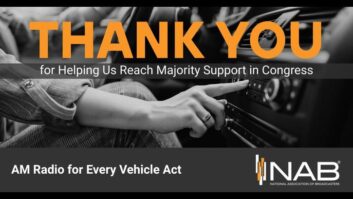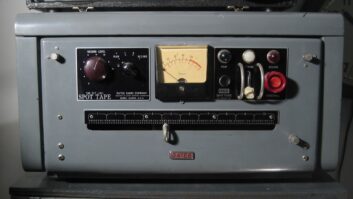GUEST COMMENTARY
By Jon Schorah
The author is founder and creative director of Nugen Audio.
LEEDS, England — For several years now, loudness normalization (the matching of the average loudness of program material and commercials to minimize unwelcome loudness jumps) has been well-established in television broadcasting.
Loudness for television is unified by a single measure (ITU-R B.S. 1770) and an almost universal target value (–23 across Europe/–24 LKFS for most of the rest of the world). This has led to reduced viewer complaints and greater consistency of listening loudness at the station level and even across networks.
COMPLEXITIES

Jon Schorah is founder and creative director of Nugen Audio Radio has also been engaged in a similar process. Radio shares many issues with television; however, radio has unique complexities around transmission and listener practice. While adoption of a global standard within radio is still a little way off, much research into loudness normalization has already been undertaken and, in many cases, the practice is already well-established.
The first point worth examining is the television broadcast loudness standard and its possible application to radio. So far, experiments conducted in this realm have had mixed results. Yes, the application of the television standard can be used to remove loudness jumps within and between programs, allowing the listener to set a comfort level and avoid having to constantly reach for the volume control in order to hush intrusive content such as commercials. But the nature of radio consumption is different enough from television for a direct application of the TV standards to be an uneasy fit.
In general, television viewing occurs in a relatively controlled environment, usually in the home, with the listener engaging in a focused, program-by-program manner. With radio, the listener is often in a complex environment with other demands for attention; e.g. the car, workplace or office commute. These environments can involve high levels of background noise and interruption, which raises two complicating factors.
First, a lot of background noise means that the effective noise floor of the entire system can be very high. For highly dynamic programming, this can lead to quiet sections in which clarity is compromised. Recently, new measures such as the PLR (Peak-to-Loudness Ratio) have been developed to objectively measure audio dynamics and indicate if further reductions may be advantageous.
Second, new forms of radio delivery are beginning to have a significant impact on consumption patterns. Streamed services over the internet are commonplace, with listeners choosing to “listen again” at a later date via podcast and mobile audio devices. Many of these devices contain gain and headroom restrictions designed to prevent excessive levels and hearing damage.
The unfortunate side effect of such limitations is that programming below –20 LUFS can mean that gain is insufficient to achieve sonic clarity at playback. Many audio streaming services also employ data compression techniques, which lead to further degradation of audio quality if due care is not taken in preparing the original audio signal for the chosen codec. Here, as with TV, the true-peak measurement can be used to guard against possible distortions where necessary.
NORMALIZATION
Certainly, the television industry has had an additional motivation when addressing the loudness issue — legislation. High volumes of listener complaints eventually led to several countries adopting a legal framework to address the matter (most notably the CALM Act in the United States). Despite a lack of legislation, however, voluntary standards and practices are beginning to emerge, based entirely upon a desire to improve audio quality and listener satisfaction.
The entire Norwegian radio network implemented loudness normalization beginning in 2013, adopting a level of –15 LUFS, and several other key radio broadcasters (BBC Radio and National Public Radio among them) are currently making moves towards a loudness-normalized target. Late last year, the AES published a “Recommendation for Loudness of Audio Streaming and Network File Playback,” addressing many of the issues raised in this article and proposing a loudness window of –20 to –16 LUFS and a maximum peak of –1 dBTP.
Finally, no discussion about audio loudness would be complete without a mention of the loudness wars, where music is “hyper-compressed” to make a track as loud as possible in order to make it stand out, or at least compete with other tracks in a playlist. With many music streaming services such as Spotify and Apple Music Radio now also employing loudness normalization protocols, radio is perhaps the final link in the chain to give the average consumer a consistent, loudness-normalized listening environment.
For music producers, loudness normalization may prove to be even more significant. Could a move toward loudness normalization be the final battle that comes to define the end of the loudness wars?
The large volume of music programming makes radio enormously important to the music industry, so perhaps the removal of the so-called “loudness advantage” in radio could finally see audio compression becoming a universal matter of taste rather than driving the commercial imperative to be “louder than the previous song,” as has been the case in recent years. If so, then listener comfort could be simply the starting point for the benefits gained from a loudness-normalized radio service.
Radio World welcomes other points of view. Please send comments to [email protected].







